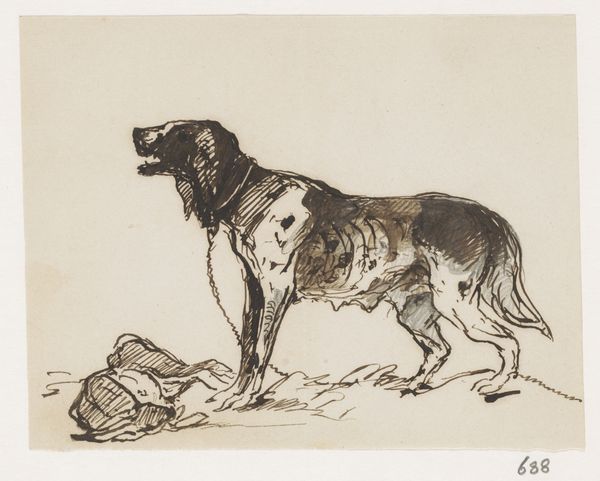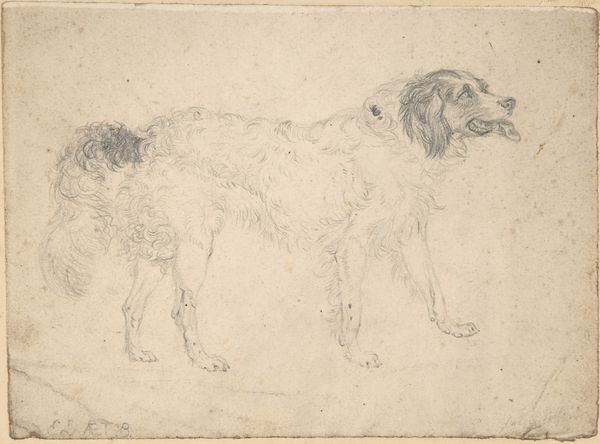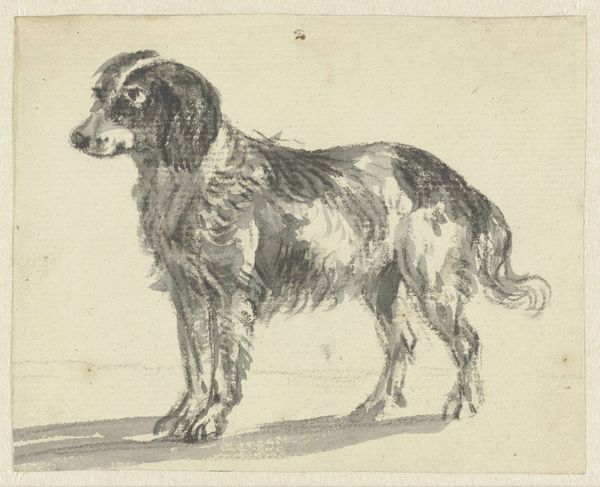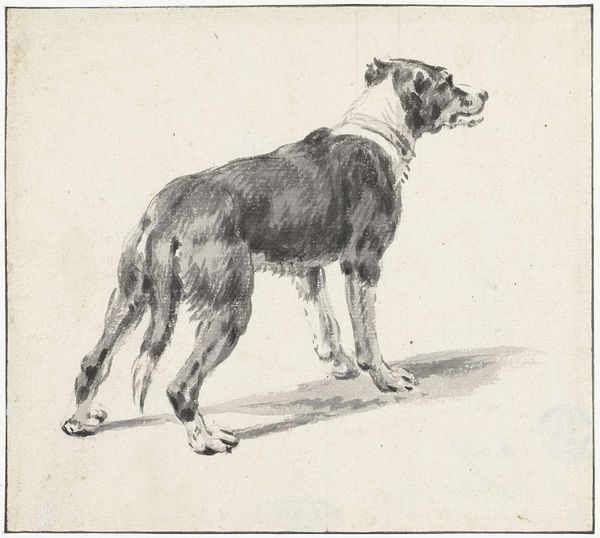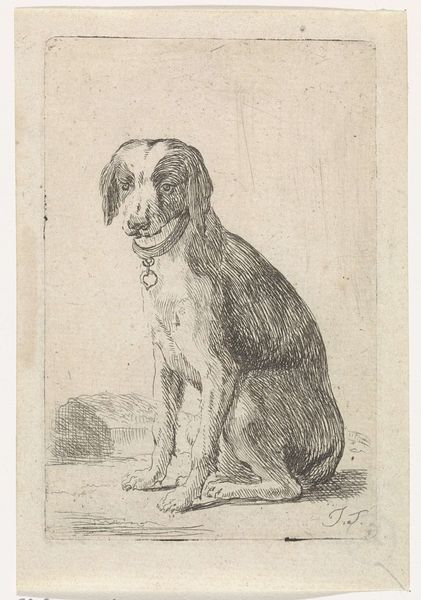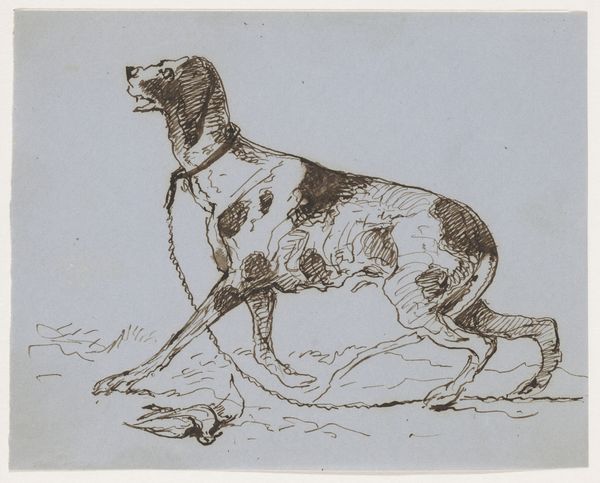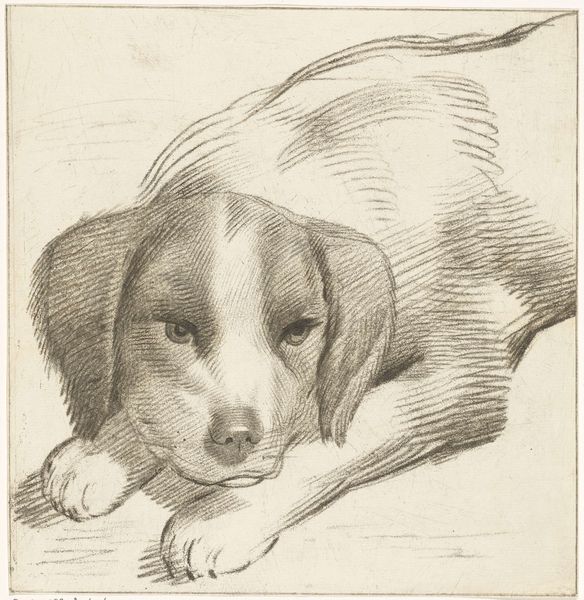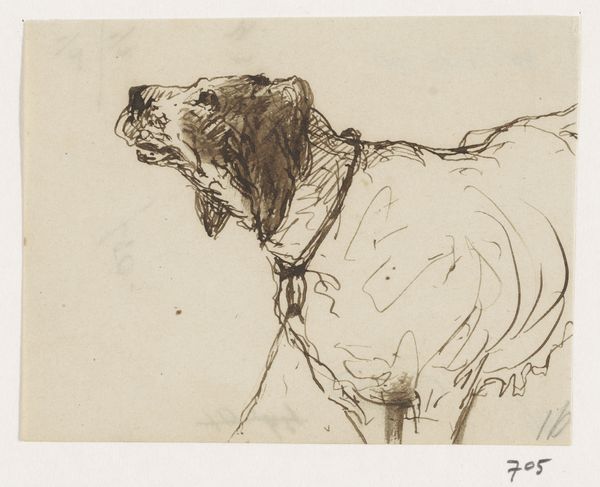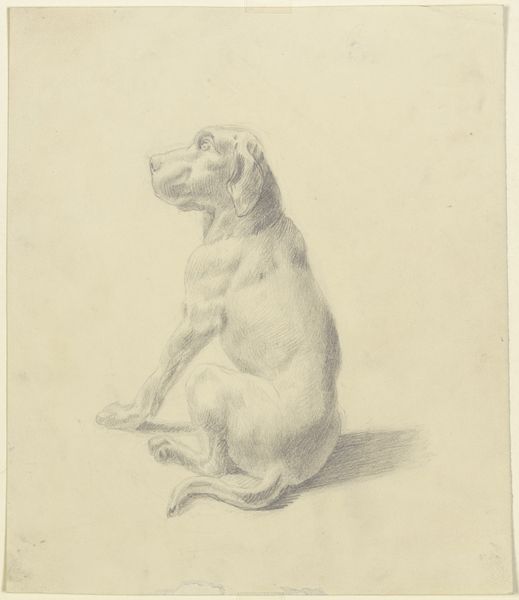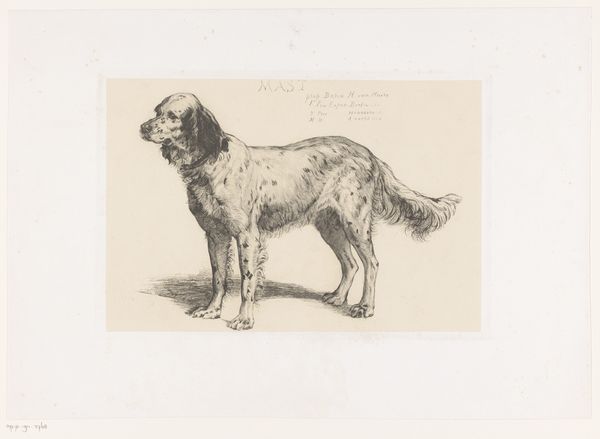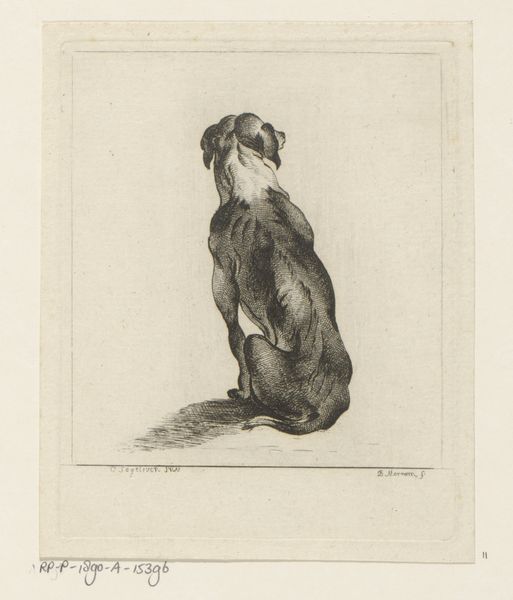
drawing, ink, pen
#
drawing
#
dog
#
ink
#
pencil drawing
#
pen
#
genre-painting
#
realism
Dimensions: height 131 mm, width 102 mm
Copyright: Rijks Museum: Open Domain
Curator: Welcome. Here in Gallery 12 at the Rijksmuseum, we see "Jachthond"– that translates to "Hunting Dog". The artist, Johannes Tavenraat, likely completed this drawing sometime between 1840 and 1880, rendering it in pen and ink. Editor: It's interesting, isn't it? Even though we're seeing it from the back, there's something so alert about the dog’s posture. You can almost feel the tension in its body, ready to spring into action. Curator: Precisely. Hunting dogs in the 19th century were status symbols as much as working animals. Works like these showcase the important role they had within a culture that prized country life, skill and labor, the ability to master animals for utilitarian and sporting purposes. Editor: The social context here also highlights the class divisions of the era, right? Access to hunting, owning such dogs, became markers of affluence. How does the piece avoid, or perhaps reinforce, these hierarchies? Curator: That is complex here; the medium provides us an important point. It's just an ink drawing and so does not flaunt wealth, even though this type of hunting dogs was a symbol for affluent people. Tavenraat offers an opportunity to appreciate such creature from life, maybe an average person point of view? Editor: That’s a refreshing reading, humanizing the dog beyond just its economic function. It really grounds the piece in an immediate experience. How does Tavenraat employ his materials to achieve this feeling? Curator: Tavenraat's application of pen and ink—specifically the hatching and cross-hatching—not only define the form of the dog, but also give the animal a sense of life and energy. See how the varied line-weight gives a robust physicality to the animal. It’s simple but very efficient. Editor: Yes, the minimal strokes communicate a wealth of texture and form. Also, considering this artwork was produced at a time when social roles, including class and race, were sharply defined, what impact do you think a simple sketch of a hunting dog would make? Did this play a critical role? Curator: Tavenraat wasn’t trying to offer social commentary, yet his work inadvertently captures a set of values which were in motion at the time. Editor: A single image encapsulates all those historical contexts; it’s quite something to ponder. Curator: It does prompt us to look closely, not just at the art but at the era from which it came.
Comments
No comments
Be the first to comment and join the conversation on the ultimate creative platform.

